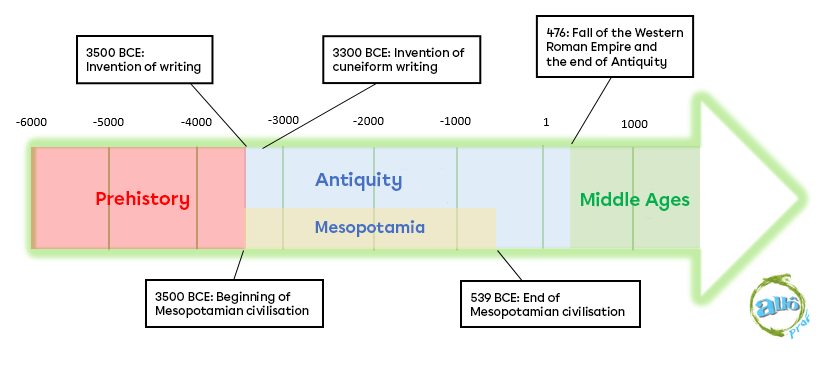It was the advent of writing around 3500 BC that marked the beginning of Western civilisations. The first of these civilisations to emerge, the Mesopotamian civilization, was located in the region of the Fertile Crescent. More specifically, the origins of this civilisation lie between two rivers: the Tigris River and the Euphrates River.
The advent of the Mesopotamian civilization marked the end of prehistory and the beginning of Antiquity. Other civilisations were born during Antiquity, such as the Nile civilisation, the Indus civilisation and the Chinese civilisation. Although the Mesopotamian civilization ended around 539 BC, Antiquity ended in 476 with the end of the Western Roman Empire.

Mesopotamia lies in the Fertile Crescent, at the junction of three continents: Europe, Asia and Africa. This region has two major rivers: the Tigris River and the Euphrates River, which offer many advantages to the people of the region. First, the land here is very fertile, thanks to the silt - small sedimentary particles - brought by the two rivers. The proximity of the rivers also means that canals can be built to fertilise the soil and boost agricultural production. All these factors contribute to abundant agricultural production and population growth. In addition, the Tigris River and Euphrates River can be used to improve the circulation of people in the area.
A city-state is a city with its own government and institutions. It has as much power as today's countries. It is completely autonomous.

Map of the Fertile Crescent
The word Mesopotamia originally comes from two Greek words: mesos (in the middle of) and potamos (river). Mesopotamia therefore means the land between the two rivers.